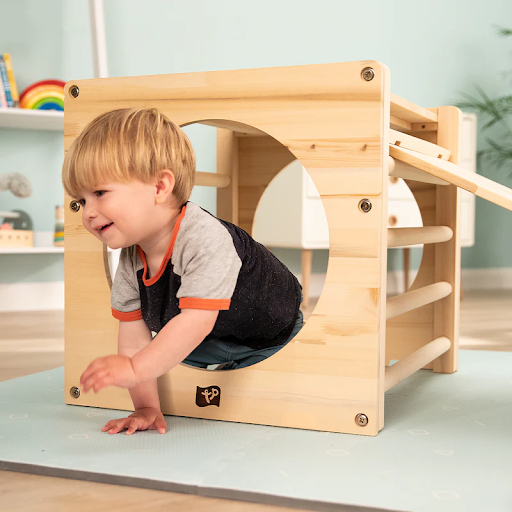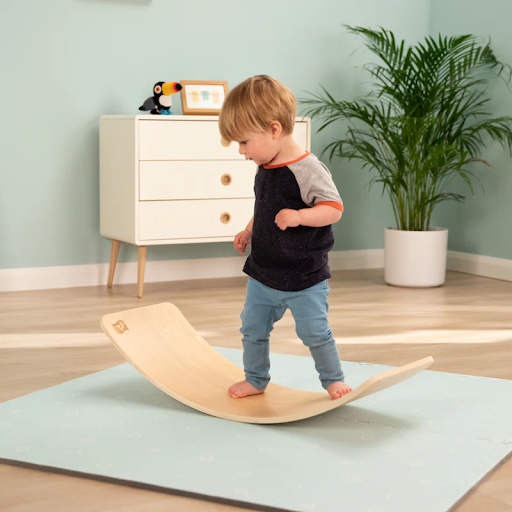Children with Autism Spectrum Disorder (ASD) and Attention Deficit Hyperactivity Disorder (ADHD) often face unique challenges in their development, particularly in areas such as communication, social interaction, and sensory processing. The role of play in child development is universally acknowledged, but for children with ASD and ADHD, play can be a crucial avenue for growth and learning. Specifically, the right choice of toys, such as baby toys and montessori toys, can play an essential role in supporting their development, making playtime enjoyable and therapeutically beneficial.
Understanding the Needs of Children with Autism and ADHD
Children with autism and ADHD often experience the world differently from their neurotypical peers. Autism can affect a child’s ability to communicate, interact socially, and process sensory information. Whilst ADHD can lead to difficulties in maintaining attention, controlling impulses, and regulating energy levels. Traditional toys may not always cater to these unique needs. So, it’s important to choose toys specifically designed or suitable for children with these conditions.
The Role of Baby Toys in Early Development
Even in their earliest years, children with autism and ADHD can benefit from the right selection of baby toys. These toys are not just about keeping a child occupied. They serve as tools to help develop fine motor skills, sensory processing, and early cognitive abilities. For example, soft, textured toys can help children with sensory sensitivities by providing comforting, tactile experiences. Toys that involve repetitive actions, such as stacking rings or sorting shapes, can be particularly beneficial for children with autism, as these activities can be calming and help improve focus and fine motor skills.
Moreover, baby toys that produce sounds or light up in response to actions can also be engaging for children with ADHD. This is because they may be drawn to the cause-and-effect nature of these interactions. These toys can help sustain a child’s attention and encourage them to explore their environment safely and structure. As the child grows, simple, interactive baby toys lay the foundation for more complex play and learning experiences.
Montessori Toys: A Holistic Approach to Learning
Montessori toys, based on Maria Montessori’s educational philosophy, are particularly effective for children with autism and ADHD. These toys are designed to encourage independence, focus, and hands-on learning. They often consist of natural materials and are simple in design, which can be less overwhelming for children with sensory processing issues.
One of the key principles of Montessori toys is that they are meant to be self-correcting. For instance, a toy that requires a child to fit different shapes into corresponding holes teaches problem-solving skills and perseverance. The child learns through trial and error, which can be incredibly empowering for children with autism and ADHD who may struggle with frustration and impatience.
Additionally, Montessori toys are often open-ended, meaning they can be used in multiple ways depending on the child’s interest. This flexibility is particularly beneficial for children with ADHD, who may lose interest quickly if a toy has only one function. By allowing the child to explore different ways to interact with the toy, Montessori toys help sustain their attention and nurture creativity.
Sensory Play: A Crucial Component
Sensory play is an integral part of development for all children. But it is especially important for those with autism and ADHD. Sensory toys, which stimulate the senses of touch, sight, and sound, can help children with these conditions better process sensory information. For example, a weighted blanket or a soft, squeezable toy can provide calming, deep pressure for a child with autism. On the other hand, brightly coloured objects that make noise can engage a child with ADHD, helping them channel their energy into focused play.
Montessori-inspired sensory toys, such as wooden blocks or textured puzzles, offer the dual benefits of sensory engagement and cognitive development. These toys encourage children to explore their environment through touch, sight, and sometimes even smell, which can help improve their sensory processing abilities over time.
Encouraging Social Interaction and Communication

Toys also play a crucial role in fostering social interaction and communication, areas where children with autism and ADHD often face challenges. Toys encouraging cooperative play, such as building sets or interactive games, can help children learn to share, take turns, and communicate with others. Montessori toys that involve role-playing, such as kitchen sets or dollhouses, can also be useful in helping children with autism and ADHD practise social scenarios in a safe and controlled environment.
Moreover, using toys as a medium, parents and caregivers can engage with children in non-threatening and enjoyable ways, helping to build trust and improve communication. This interaction can be particularly beneficial for children with autism, who may find direct social interaction overwhelming.
Conclusion
Choosing the right toys for children with autism and ADHD is not just about providing entertainment; it’s about supporting their development in a meaningful way. Baby toys and Montessori toys, with their emphasis on sensory engagement, cognitive development, and hands-on learning, are particularly effective tools in this process. By selecting toys that cater to the specific needs of children with autism and ADHD, parents and caregivers can help these children grow, learn, and thrive in their own unique ways. Playtime becomes a time for fun and a vital part of their developmental journey.

